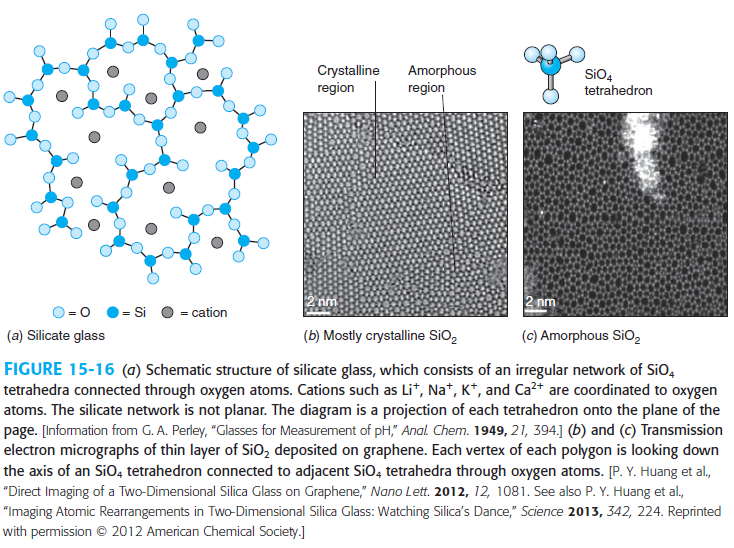I am trying to understand how the glass bulb of a pH electrode of a pH meter works - the glass bulb itself. Not the reference electrode or the rest of the electrode (HCl, Ag/AgCl wire, etc...), the math, or the equilibrium yet. For this question just the glass bulb of the pH electrode.
Here is what I have learned so far. This is my current understanding. I'm not saying it is right - but it's where I am right now.
The thin-walled glass bulb has a conductive solution inside, and the outside should be kept in liquid at all times as well. This hydrates a thin layer of the glass on the outside and the inside. I assume these layers are manufactured differently, otherwise, the glass should be uniformly hydrated after a long enough time. It is important that the middle layer of the glass remains very low conductivity so that a potential difference can be maintained; there are likely other reasons as well.
The glass is amorphous and in this case, the exterior layers are somewhat porous, so there is a large volume of Si-O groups exposed to the solution. Protons will stick to these groups and establish a negative charge on the outside of the glass. The number is related to the pH or hydronium concentration of the solution on the outside of the electrode.
edit: I have just started to read this early discussion, where the idea that the glass itself may behave as a sort of buffer:
Hughes (3) has pointed out that the hydrogen ion concentration in the glass phase may be held relatively constant by the buffer action of the glass which is a mixture of the salt of a weak acid $(\ce{Na2SiO3})$ with the anhydride of that acid (excess $\ce{SiO2})$.
Note: The hydrated layer is also called a "gel layer", but it is not clear if this is formed naturally as the glass hydrates, or if there is a special gel-enabling material applied to each surface during manufacture.
- Do these have to be specially prepared layers of more porous, hydratable glass on the inside and outside of the glass bulb? If so, roughly speaking how is this done? If not, what does limit the depth of the hydrated layer?
- When inserted into an acid/base solution, is it just protons diffusing into the hydrated layer of the pH probe bulb by jumping between Si-O sites, or is it the hydronium ions in solution that is diffusing into the glass?
- Why is it this often called an ion exchange process? (e.g. not in the Mettler link but in the other two links below, and several random textbooks pulled from a library shelf). Are there Li or Na ions in the glass that are moving? What is being "exchanged"?
below: From A Guide to pH Measurement – the Theory and Practice of pH Applications, Mettler, Toledo.
below: From Theory and Practice of pH Measurement.
below: From The Glass pH Electrode by Petr Vany´sek.





